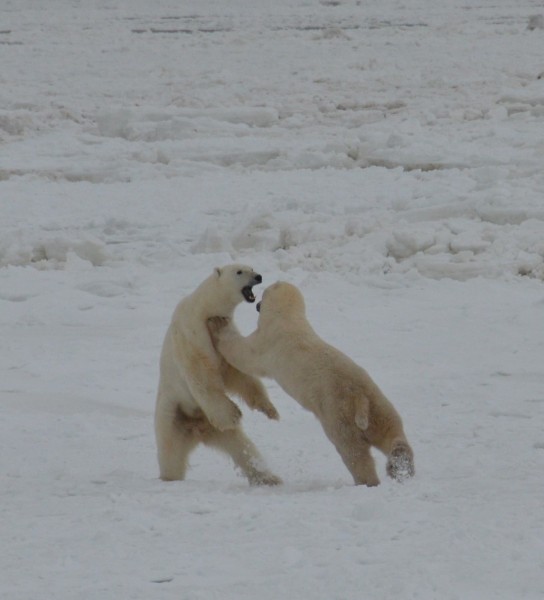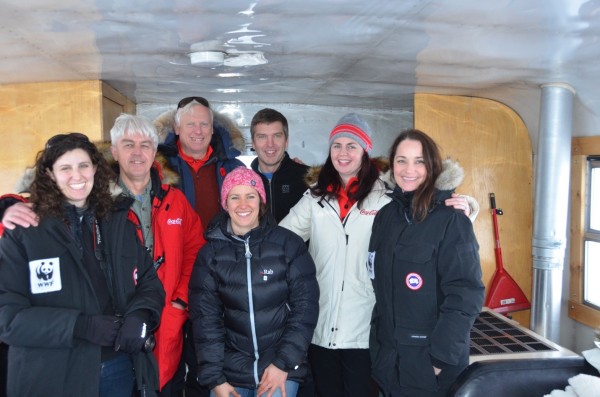My first encounter with polar bears
I’ve traveled to the North before, paddled in Arctic waters, seen all kinds of wildlife – but until last fall, I had never encountered a polar bear.
That was when I took a trip to Churchill, Manitoba – the polar bear capital of the world – with a group of WWF experts and supporters. It was an incredible experience, a chance to visit a ‘reverse zoo’ as our tundra buggy driver described it, where contained humans visit animals in their natural habitat. We spent two days on the tundra, roaming around in a custom-designed vehicle, watching mother bears care for and protect their cubs, young male bears spar for hours, and solitary bears pace the shore, waiting for the sea ice to come in.

It was a powerful reminder of just how impressive– and fragile— nature is. The bears are massive, with paws the size of dinner plates and jaws that can easily crush a seal’s skull. Even the cubs born around new year were already a good size, including a pair of twins we saw. But several of them were leaner that experts consider healthy, rating just a ‘2’ on the scale scientists use to assess their body types (a ‘5’ being the most robust). That included the mother of those cubs, whose shoulder blades were visible—a sign she might be starving. Although 2014 was a fair year for Arctic sea ice, she had still been off the ice for too long, with two cubs to feed.
These polar bears are part of the Western Hudson Bay subpopulation, which is at the southern edge of the polar bear range, the area most affected by climate change. This is the best studied subpopulation, the most accessible to scientists – and one of the best indicators we have of what a warming Arctic will mean for polar bears throughout the range. So seeing first-hand the cost of climate change on these bears was particularly troubling. At the same time, though, it was inspiring – a reminder of how important our work at WWF is, of why we do what we do. Documenting the impact of climate change on polar bears and their habitat is crucial to protecting this species for future generations.

And I wasn’t the only who was inspired – some of my fellow travellers were just as moved by the experience. A trio of chief engineers from WWF partner Canada Steamship Lines saw new meaning and value to their efforts to reduce their ships’ greenhouse gas emissions. “I wasn’t an environmentalist before,” one of them told me, “but I am now.”
Our Arctic work depends on your support and right now you can have double the impact. Donate now and a generous donor will match your gift (the first $130,000 in donations will be matched).
Learn more about WWF’s important Arctic work at wwfcastg.wwf.ca/polarbearweek.
